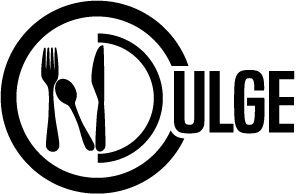Why Restaurant Margins Are Shrinking & How to Increase Profitability Without Losing Guests
- Admin
- 2 hours ago
- 4 min read

Guest spending is slipping—and most operators don’t even know it. Dining rooms feel steady. Sales reports look solid. But margin? It’s quietly vanishing. In markets like Washington, D.C., diner spending is down 2.5% over the past two years, and similar trends are emerging nationwide. Guests are skipping the appetizer. Ordering water. Sharing entrées. Making small shifts that add up to big losses for your bottom line. This isn’t panic territory—but it is time to lead with precision. Here’s how smart restaurants protect profit and position for strength, even when guests start spending less.
1. Stop Blanket Price Increases—and Elevate What Sells for Improved Restaurant Profitability
Raising prices across the board is a blunt instrument—and in a soft-spend climate, it can backfire fast. Instead, start with your PMIX (Product Mix Report) to determine where price increases actually make sense.
Segment your menu into:
Stars (high volume, high margin)
Workhorses (high volume, low margin)
Puzzles (low volume, high margin)
Dogs (low volume, low margin)
In most restaurants, 40–60% of entrées sold are also priced the cheapest on the menu. That’s where a small, data-informed price increase will have the greatest impact with the least resistance. Meanwhile, your premium-priced items may not need adjustment at all. This is also your opportunity to pull underperforming items and push your “stars” to the forefront—especially if you enhance their perceived value through plating, garnishing, or naming.
Smart pricing isn’t emotional—it’s operational.
2. Shrink the Menu—and Elevate What Sells
A bloated menu creates waste, slows down your kitchen, and weakens your identity. Now is the time to simplify and strengthen. Use your PMIX to cut low-volume, low-margin items. Then, take your top performers and ask:
Can we improve guest presentation?
Can we justify a small price increase with a minor upgrade?
Can we align our messaging to make it the dish we’re known for?
You don’t need a dozen “okay” dishes. You need a few great ones that sell and scale.
Guests aren’t walking out because you're expensive—they’re walking out because the value didn’t match the price. Get great at what sells, and charge what it’s worth.
3. Train Your FOH Team to Sell with Purpose—and Serve with Intention
When sales slip, most operators focus on guest traffic. But the better play is to improve what happens with each guest you already have. Your front-of-house team is one of your most under leveraged revenue levers. When properly trained, they don’t just take orders—they shape outcomes. Effective training empowers your team to:
Confidently suggest high-margin items
Connect product stories to guest preferences
Know when to upsell—and when to simply serve
With even modest structure, operators often see a 10–15% increase in check average through better guest engagement—not aggressive sales tactics. That said: don’t upsell your regulars. They’re coming back for the familiarity, not the extra cocktail. Great hospitality is knowing the difference. Consistency, connection, and care still win. Upselling is the bonus, not the goal.
4. Operational Efficiency Is Strategy—Not Just Cost Cutting
When margins tighten, labor often takes the first hit. But cutting without strategy leads to overworked staff, service breakdowns, and burnout. Real efficiency doesn’t mean less labor—it means better alignment.
Start by reviewing:
Sales by daypart: Are you adjusting coverage every 30 minutes based on actual guest flow?
Task mapping: Are prep and side duties eating into peak-time availability?
Role clarity: Does each position have a defined set of outcomes?
You don’t need more hours—you need purposeful hours. Team members need to know how to win the shift, not just survive it. When labor is scheduled with precision and tied to outcomes—not just habit—you reduce cost, improve service, and increase morale.
5. Tighten Inventory Before It Becomes a Liability
Inventory isn’t just food—it’s cash sitting on your shelf. And in soft revenue cycles, it’s one of the easiest places for profit to quietly leak.
Here’s where to focus:
Days on Hand Reports: Track what’s moving—and what’s sitting.
Waste Logs: Spot patterns early. If you’re not logging waste daily, you’re not managing it.
Inventory Frequency: Monthly counts aren’t enough. Perishables (protein, dairy, bread) should be counted weekly to stay proactive, not reactive.
On inventory day, your goal should be to count nearly empty shelves, not discovering overstocked products you forgot you had. When inventory is tight, ordering becomes accurate, prep is more consistent, and your team is more accountable.
Bottom Line: Shrinking Spending Doesn’t Mean Shrinking Standards
If your guest count is steady, but your margin is slipping, the problem isn’t traffic—it’s execution.
This is your moment to step back and lead:
Refine your menu
Rethink your pricing
Re-align your labor
Control your inventory
Elevate your service
Don’t let your hard-earned money fly away! Increase your restaurant profitability and secure your margins with proven strategies that keep revenue in your pocket.
📞 Take control of your profits today. Schedule a free strategy session now to learn how to capture the revenue you're missing!
